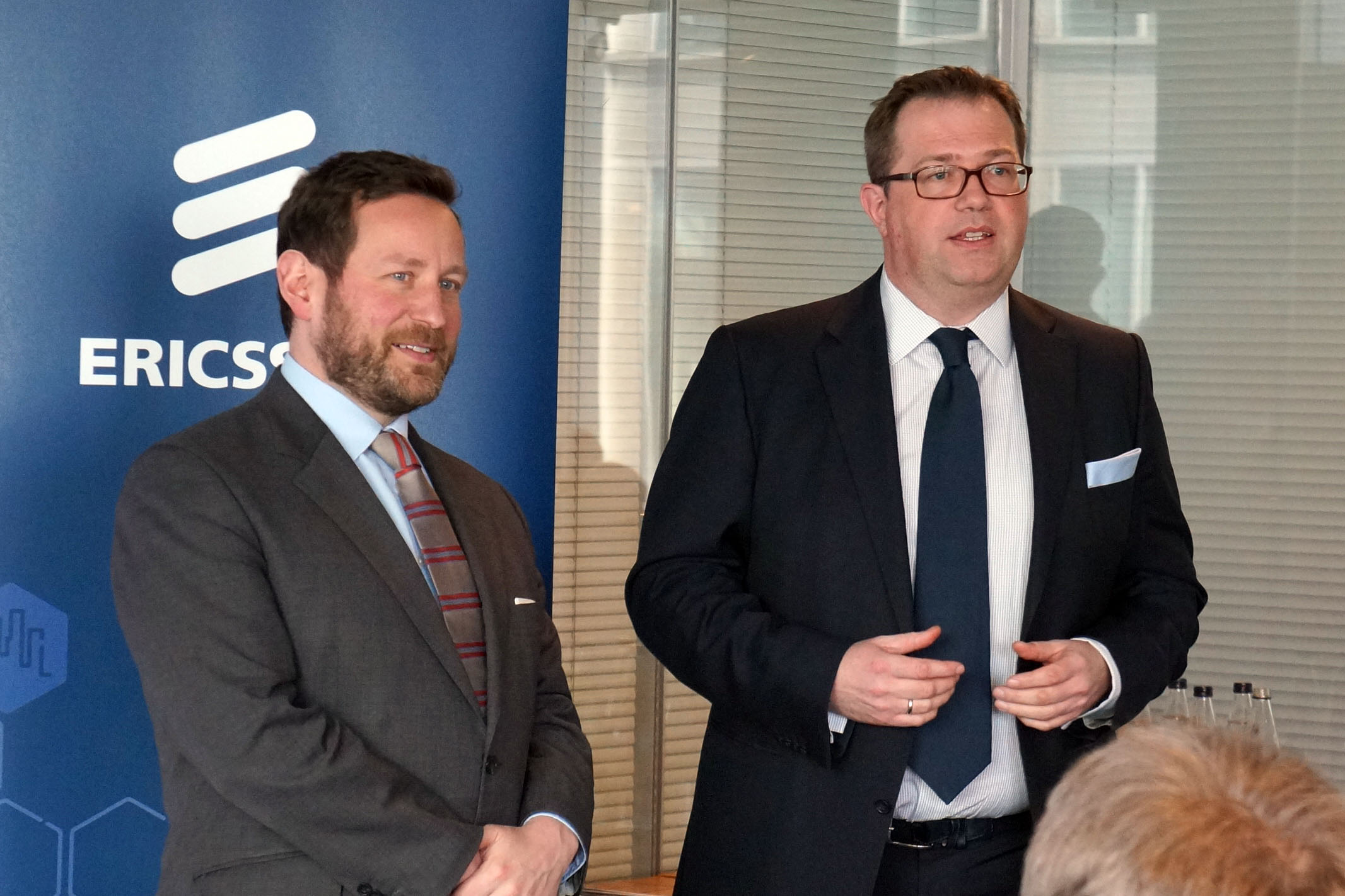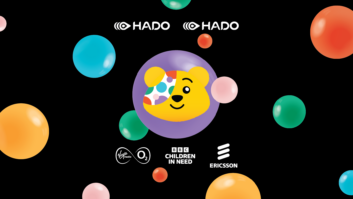
We are experiencing “the most exciting time in the TV media industry”, according to Thorsten Sauer (pictured, right), Ericsson’s head of broadcast and media services, as he outlined the findings of the company’s Global Insights 2015 and Consumer Insights Summary reports this week.
Speaking at London’s Broadcast Centre, one of the UK’s leading broadcast facilities, he opened with the oft-used phrase, “content is king”, though also asserted that “there is another king in town – the consumer”. This new generation of consumer has grown up with the internet, and expects a more personalised TV experience, Thorsten continued. “Convergence” is also another buzzword of the moment: Thorsten used the example of BT investing heavily in acquiring broadcasting rights, and other telcos translating to mobile platforms. Ericsson predicted this convergence trend ten year ago, Thorsten asserted, and whereas production, content enrichment, content publishing and distribution, and content consumption “used to be separate”, now, Thorsten continued, “we believe in convergence…we want to be there and act.” This is evident through Ericsson’s slew of acquisitions, including Fabrix Systems, Red Bee Media and Microsoft Mediaroom.
Ed Vaizey (pictured, left), Minister for Culture, Communications and Creative Industries was also at Broadcast Centre, and praised Ericsson’s “fantastic” investment in the UK. The company operates from ten locations in the UK, employing 5,000 people, with 2,1000 of these working in the media and TV sectors. Vaizey also stressed the importance of “convergence”, contemplating the potential merger of BT and EE. He also used the event as an opportunity to champion government initiatives like content tax relief for high-end TV drama and increasing R&D tax relief, promising that a Conservative government will be “continuing to invest in the future”.
Michael Bjorn, head of research at Ericsson ConsumerLab, introduced the findings from the new Ericsson research report on TV and media which looks at the changing behaviour of audiences in the UK. This marked the 15th annual TV and media study, involving 23 countries worldwide, including 2,000 online interviews with 15-69 year olds in the UK.
One of the key findings highlighted by Bjorn was how on-demand streaming is replacing recorded TV and closing in on linear broadcast; 69 per cent of UK consumers watch streamed on-demand video at least several times a week, compared with 51 per cent who watch recorded broadcast TV and 82 per cent who watch scheduled broadcast TV with the same frequency. On-demand and catch-up services are disassembling broadcast TV channels, the report concluded, as TV channels are increasingly considered a source from which consumers can harvest content, for example using a DVR.
Content on the go is growing, and this is driven primarily by 16-24 year olds. Smartphone viewing has increased by 44 per cent since 2012 and today 26 per cent of consumers are place-shifting content (starting to watch content on one device in one location, before moving to another location and watching it on another device) on a weekly basis. The ConsumerLab report examined the weekly TV and video viewing habits across the day, among different age groups, and found that – aside from ‘at home during the evening’ – the highest percentage watching at every other instance were in the 16-24 year old age bracket. YouTube is the most popular service in the UK, the report found, and 70 per cent of smartphone owners who use the internet on a weekly basis use YouTube at least once a month. Other SVoD services are catching up though, and BBC iPlayer and Netflix were the next most popular services (following YouTube) with Android smartphone users in the UK who use the internet on a daily basis.
‘The double business model challenge’ was another key point raised by Bjorn. The two main barriers for watching TV and video on mobile devices outside of the home are both cost-related, the report reveals. Forty-one per cent of UK respondents said that data cost was too high, while 36 per cent felt that the cost to rent, subscribe or buy is too high. Consumers currently have to pay for both the content and then the data consumed while watching that content.
The report also highlights the impact of 4G: three times as many 4G users watch video outside the home compared with 3G users, and they consume three times more data. In the UK, 26 per cent of 3G users plan to upgrade to 4G over the next 12 months. “4G video dominates”, asserted Matt Stagg, principal strategist at mobile network operator and internet provider EE. Whereas ���3G was a communications network that did some video”, 4G is “a video distribution network that needs to support communications”. Ericsson’s November 2014 Mobility Report predicted that video traffic will grow by ten times between 2014 and 2020 and within western Europe there will be 600 million 4G subscribers: 75 per cent of all subscriptions. At Broadcast Centre Vaizey promised that a Conservative government would “continue to invest in the future”, highlighting its funding of the University of Surrey’s research into 5G networks.
‘It is time to change the structure of TV services’ the report concludes. In the future, consumers will not accept paying for inflexible managed TV packages in order to get access to the content they love on the devices they want to use. Customer satisfaction is a central concern, and traditional TV providers are facing challenges: the ConsumerLab report found that customers are more likely to recommend their on-demand OTT service provider than their traditional TV provider. However, many people will continue to pay for a broadcast TV package out of convenience and ease of use, with live TV – and especially sports – continuing to attract audiences and offering high value.
High value content is of the upmost importance, but only if audiences can access it when, where and how they wish. “Customer experience is paramount”, concluded Stagg. “And although ‘content is king’ is often quoted, it is actually ‘customer is king.’”.







